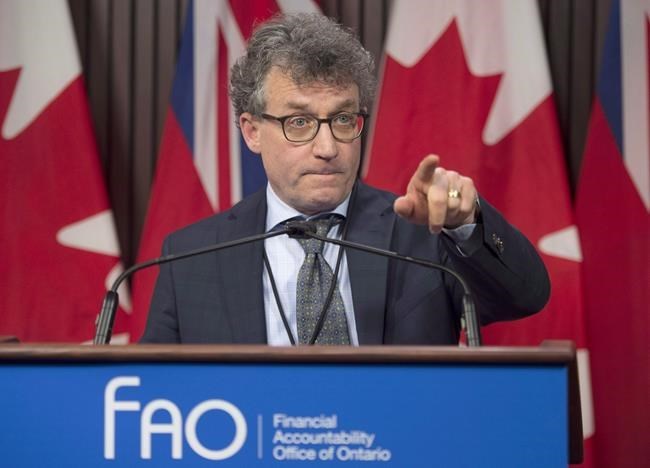TORONTO — Ontario's Progressive Conservative government is not being transparent about how it plans to spend money over the next several years, the province's financial watchdog said Thursday.
A report from the Financial Accountability Office said the government's current spending plan contains $40 billion in program funding shortfalls over six years, though it also contains $44 billion in unallocated contingency funds.
The contingencies could be used to address those shortfalls, but it is an unusual way of budgeting, said financial accountability officer Peter Weltman.
"What we haven't seen is this level of shortfall, but we haven't seen this size of the contingency fund before," he said.
"So this is extraordinary. We've seen big contingency funds during the pandemic, because we didn't know -- and nobody really knew -- what the heck was going to happen. So it was prudent to put some money aside, but it's unusual to put this much money aside now that things seem to be stable."
Typically, contingency funds are around one billion dollars a year, not eight, said Weltman.
"Is it a transparent way of budgeting? I don't really believe that," he said.
Finance Minister Peter Bethlenfalvy said there are still many factors on the horizon that necessitate keeping some money set aside, such as the effects of the war in Ukraine and rising interest rates.
"These are very uncertain times and that's why it's always the prudent thing to do to make sure that we've got contingency in place so that we can face any challenge that we may have," he said.
Liberal finance critic Stephanie Bowman called the government's accounting "disappointing," but not surprising.
"In my opinion, they're doing that because it gives them a picture that we don't have the money to pay education and health-care workers the money they deserve," Bowman said.
Nurses, education workers and other broader public sector employees have called on the government to repeal legislation known as Bill 124, which capped salary increases for those workers at one per cent a year for three years in 2019.
Various unions challenged the legislation as unconstitutional and if the court overturns the law and it gets repealed, the FAO said in a report last month that could cost the province $8.4 billion over five years, including a potential $2.1 billion in retroactive payments.
NDP finance critic Catherine Fife called the budgeting "irresponsible," and said it shows the government should be spending more on health care.
Green Party Leader Mike Schreiner said it is not transparent.
"A $40-billion contingency fund is basically telling the people of Ontario, 'We're not going to tell you how we're going to spend your tax dollars,'" he said. "People deserve better than that."
The FAO also said it projects budget surpluses in the province for the foreseeable future. Strong revenue growth, even though it is projected to slow, is set to outpace spending up to 2027-28.
The FAO projects a $100-million surplus at the end of this fiscal year, and an $8.5-billion surplus in 2027-28.
Bethlenfalvy announced last month that Ontario ended the last fiscal year with a $2.1-billion surplus, a far cry from the $33-billion deficit projected in the budget, thanks to inflation and a strong economy.
Otherwise, the surpluses would slow the accumulation of net debt and would see the net-debt-to-GDP ratio decline to 31.5 per cent in 2027-28, the lowest since 2008-09.
This report by The Canadian Press was first published Oct. 27, 2022.
Allison Jones, The Canadian Press



